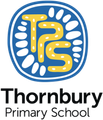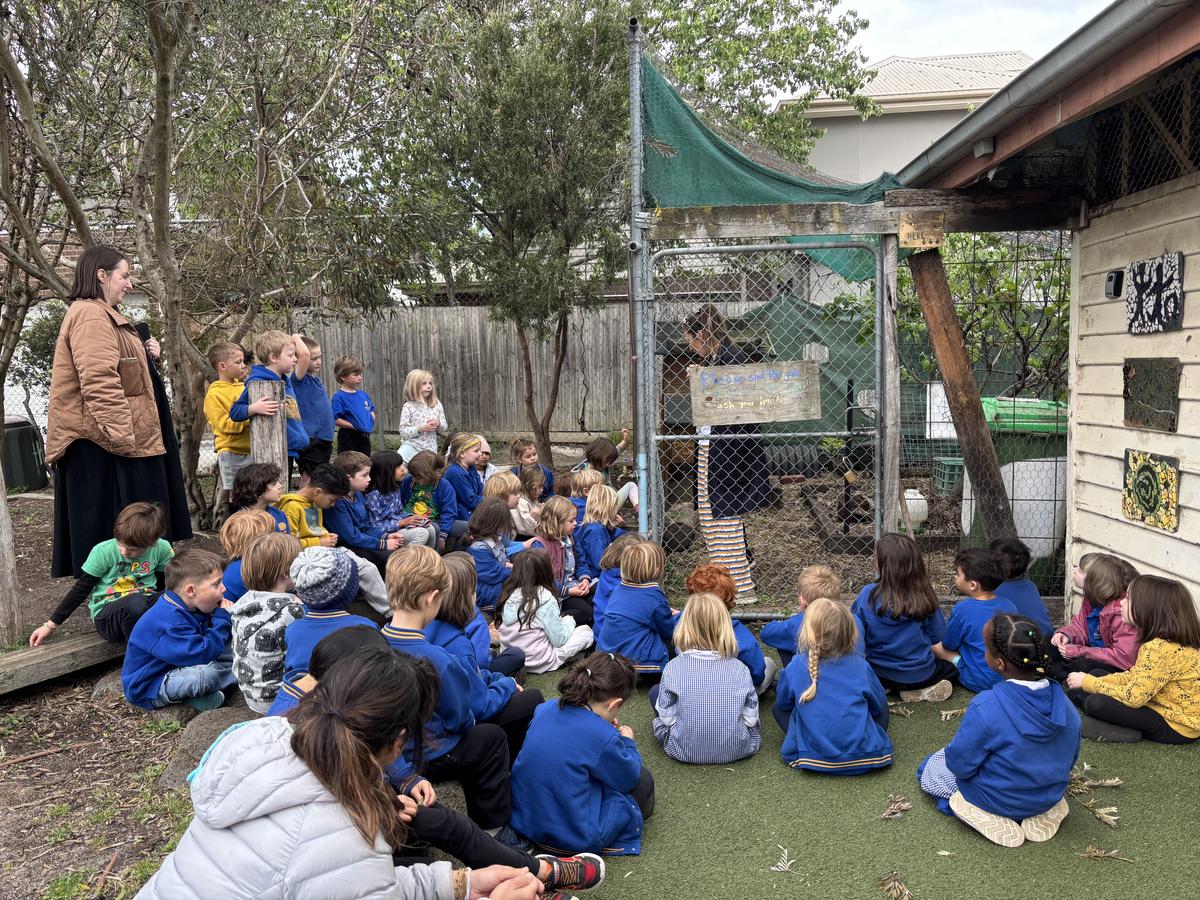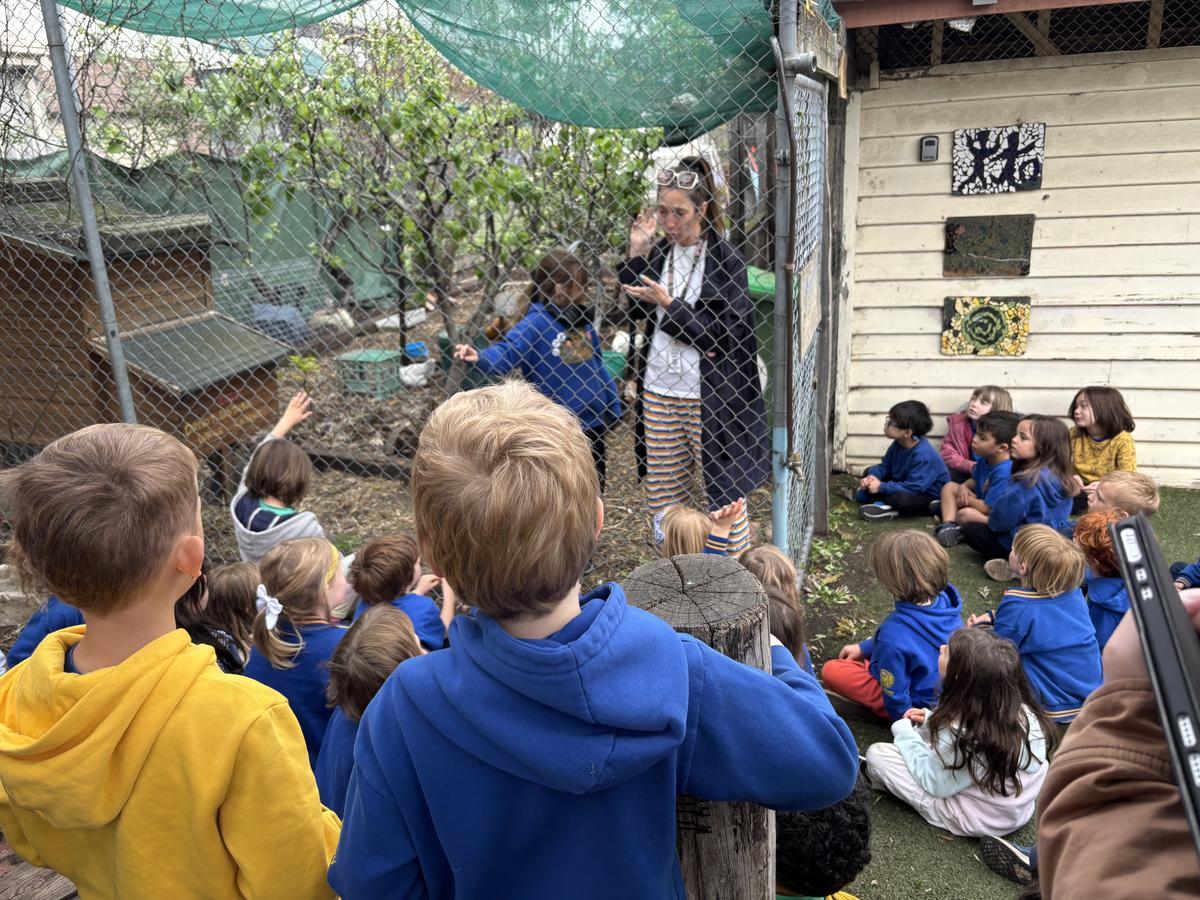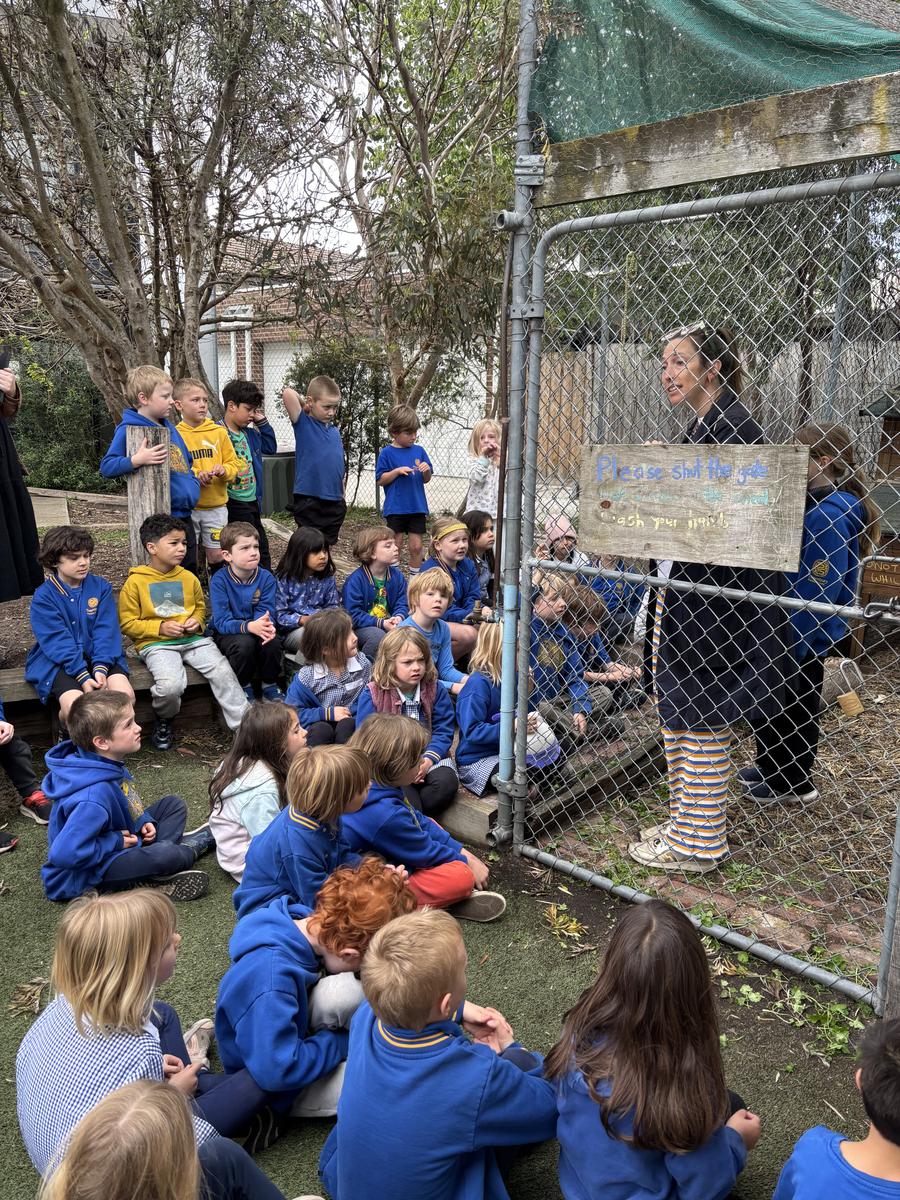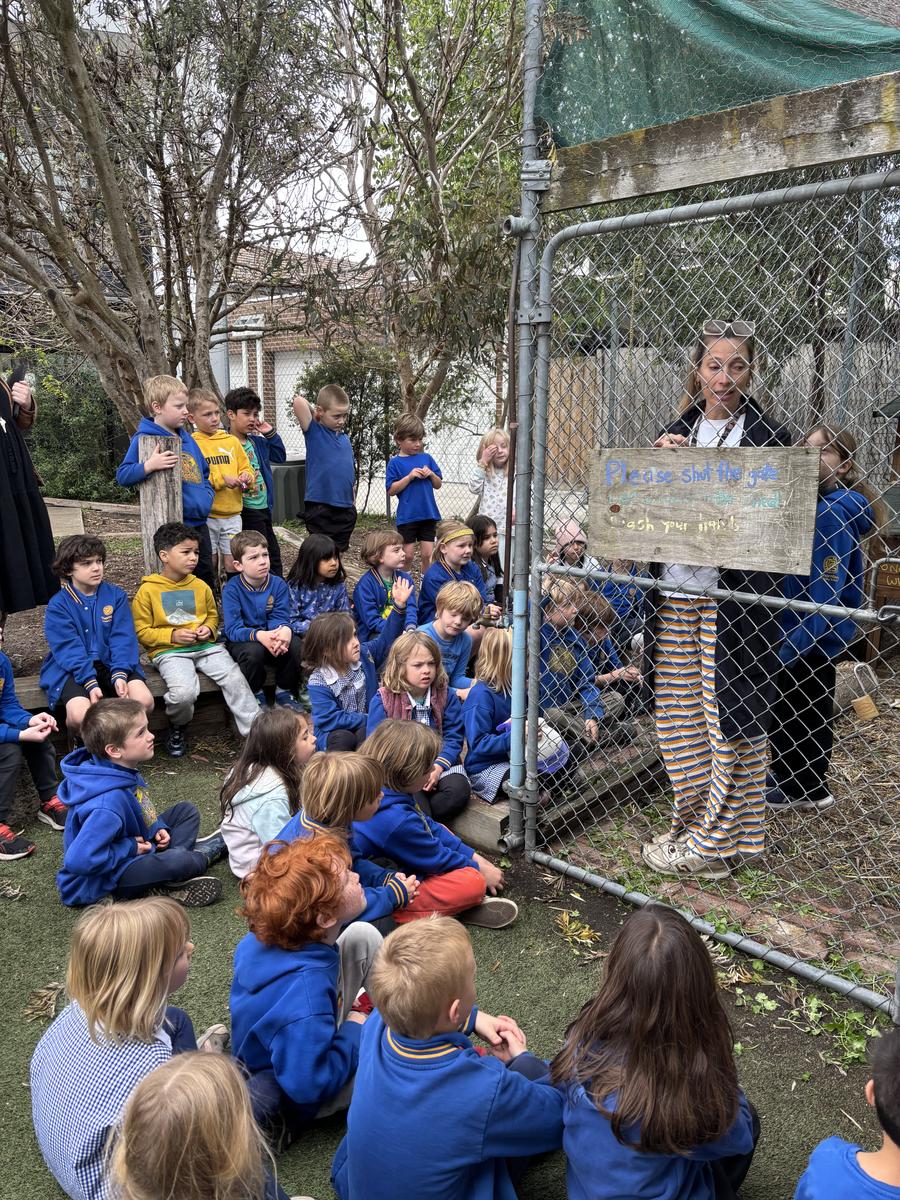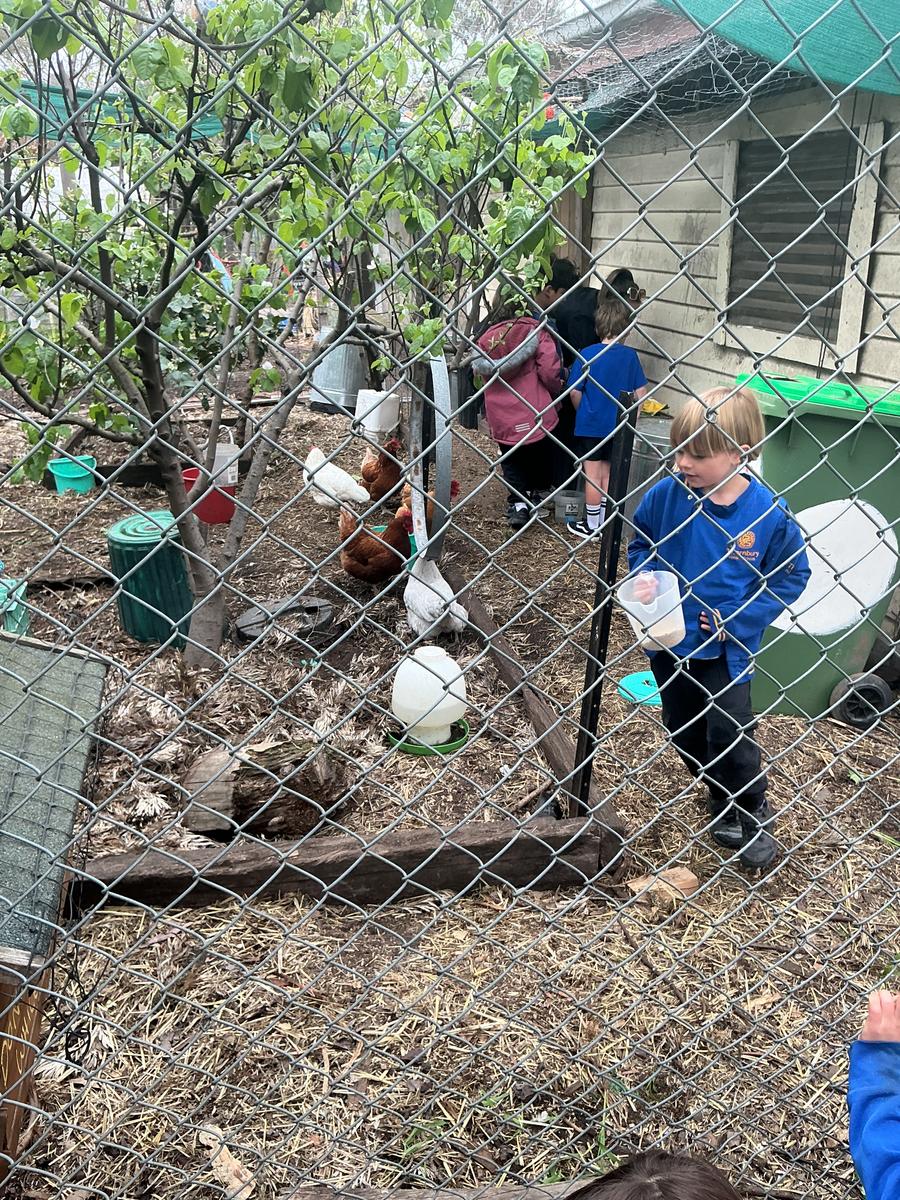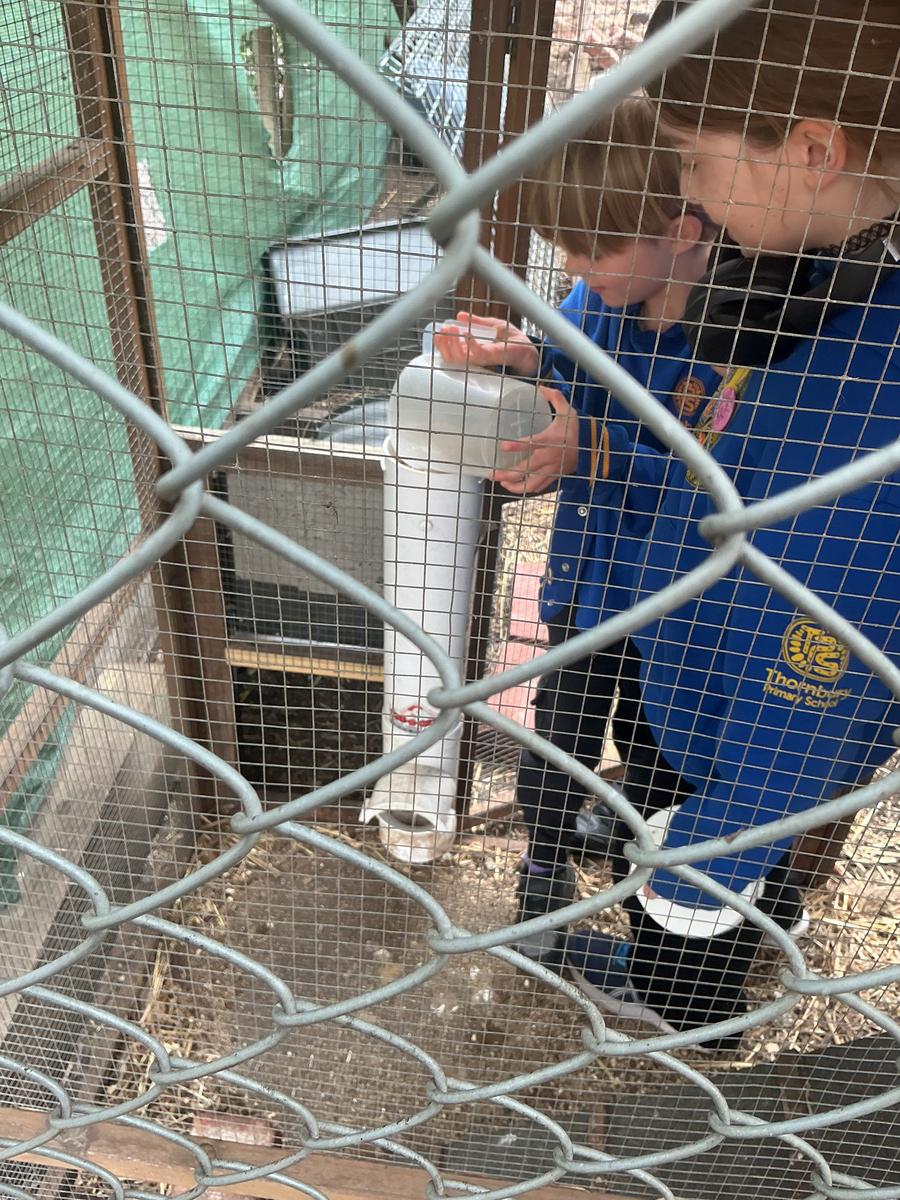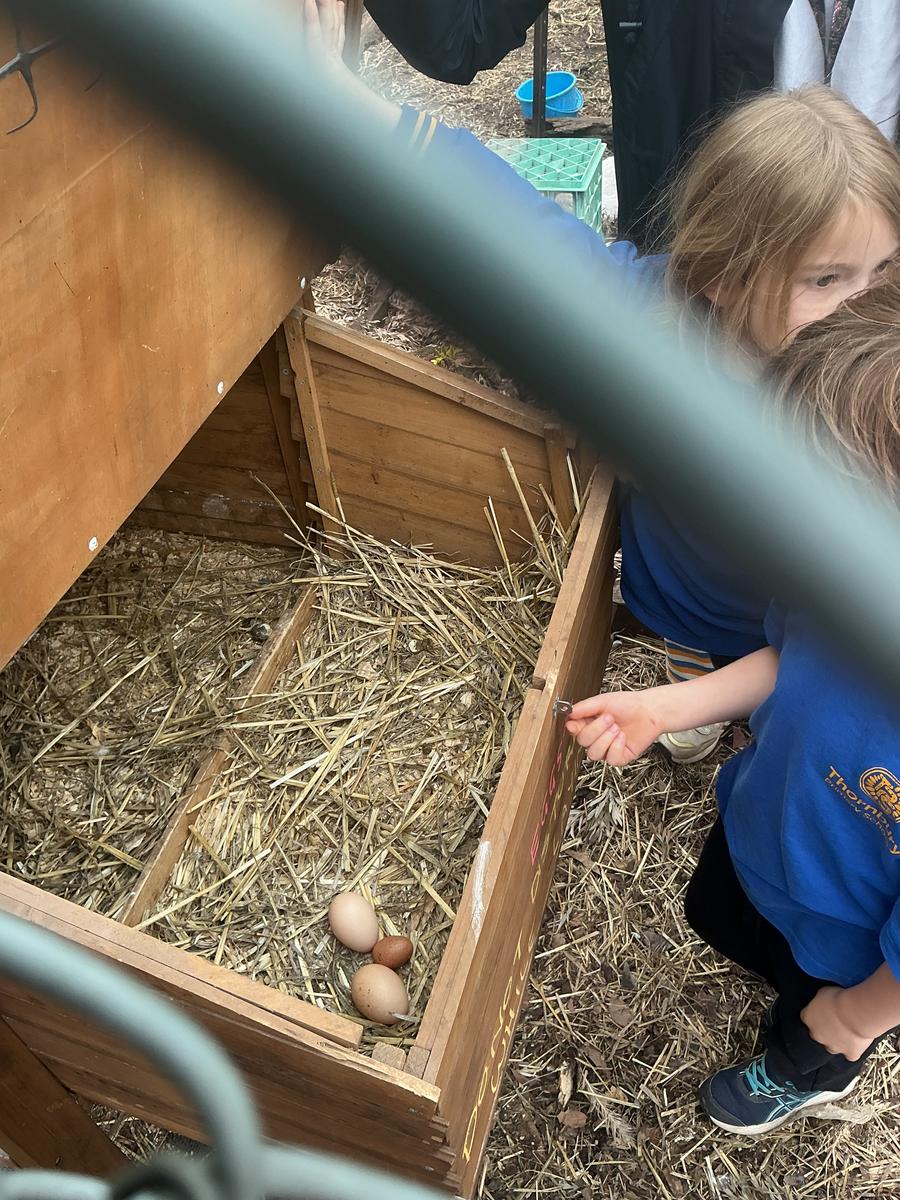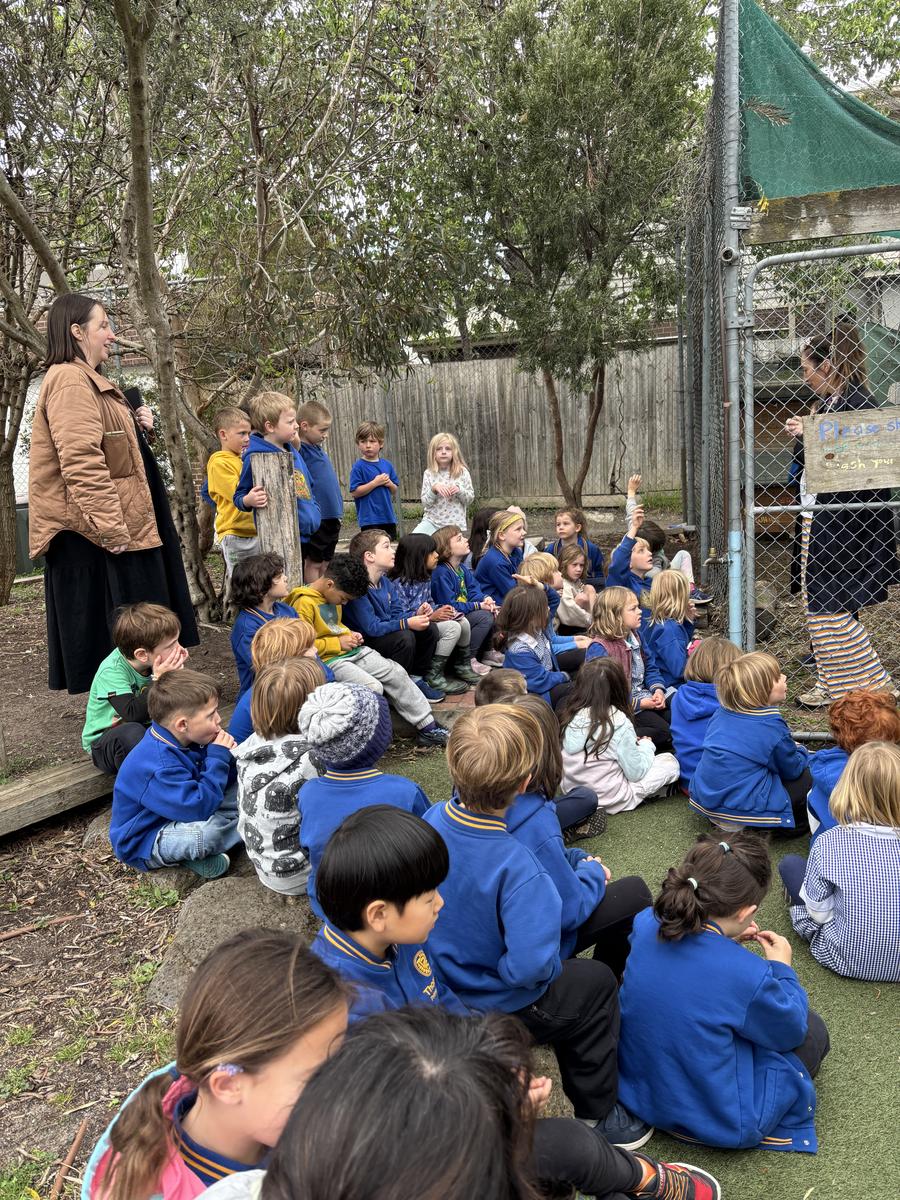Prep / 1 Mainstream
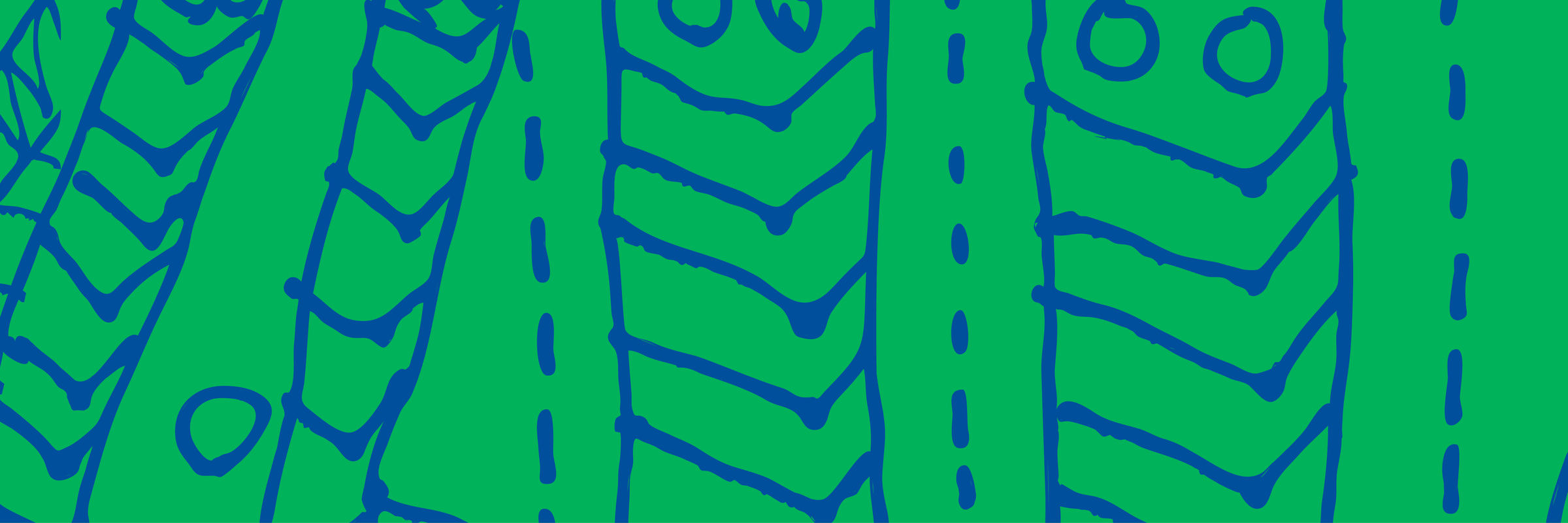
Chicken chat:
On Monday we were so lucky to have Lydia, Indi’s Mum, come and visit both our classes to chat about the chickens. Beforehand, we collected what we already knew about chickens, as well as what we wanted to find out. Then, both classes joined Lydia and her older daughter Navy outside the chicken coop to find out a little bit more. They both taught us so much!
Prep/1A found these things out:
- Some chickens lay little eggs (Lydia told us that there are only little eggs every six months or so, so finding one was REALLY LUCKY!)
- Chickens are closely related to dinosaurs!
- Chickens can’t fly really high because of their big bodies and short wings.
- Chickens can’t eat citrus or avocadoes. Someone thought they also can’t eat pears, but we weren’t sure and decided we needed to do more research.
- Chickens don’t like strawberries.
- Chickens are fast.
Thanks again to Lydia for making time to help us learn so much!
Maths:
We’ve got off to a great start in Maths. Whether it’s making friends of ten (ie. 9 and 1, 8 and 2), skip-counting by 2s, 5s or 10s, or reading books that include lots of maths, there have been lots of opportunities for the students in our classes to practise their skills in Mathematics. We also ran a pre-assessment for sharing that is going to feed into some whole schoolwork on Maths Moderation across different year levels.
Next week, we are starting a unit of work on Addition and Subtraction. Any games that include simple addition and subtraction are always fun to play at home. Here’s one that Rylee’s kids have enjoyed in the past:
Writing:
Students have been learning about the features of a non-fiction text. We have continued looking at how facts can be categorised. The categories that we have been discussing are:
-classification
-what they eat
-what they look like
-where they live
-how they move
-interesting facts
We have read lots of non-fiction books and watched some non-fiction videos about different animals. Students have begun writing down their facts in their writing books.
Reading:
An integral part of building fluency is reading out loud to a partner and receiving feedback. This gives students the chance to notice how reading words accurately impacts their own and their partners' understanding of the text. A listening partner can assist their reading partner to read a word accurately by saying:
- “That word is _____”
- “What’s that word?”
- “Good. Can you read that sentence again, please?”
We have gradually been introducing paragraph shrinking in our classrooms to assist with reading comprehension. Paragraph shrinking helps build student understanding of the text and therefore improves fluency. Students are asked to “shrink” either a very short page or paragraph of the text by identifying who the text is mostly about and what the most thing is that has happened. Students then say the main idea in a sentence that is 10 words or less.
In our reading groups over the past two weeks we have been focussing on the following sounds:
Rylee/ Anastasia and Jess:
- /ck/ as in duck
Matt was reviewing:
- /oo/ as in goose
- /le/ as in little
Steph was learning:
- /e_e/ concrete
- /e/ as in me
- Reviewing all the long /e:/ sounds (ee, ea, –y)
What’s to come in the next two weeks:
- Thank you for continuing to support your children to take home readers and practise at home.
- This term, we need to be wearing hats when we go outside for recess and lunch time. Please ensure your child comes to school with a broad brimmed hat to wear!
Warmly,
Anastasia, Jess and Rylee
